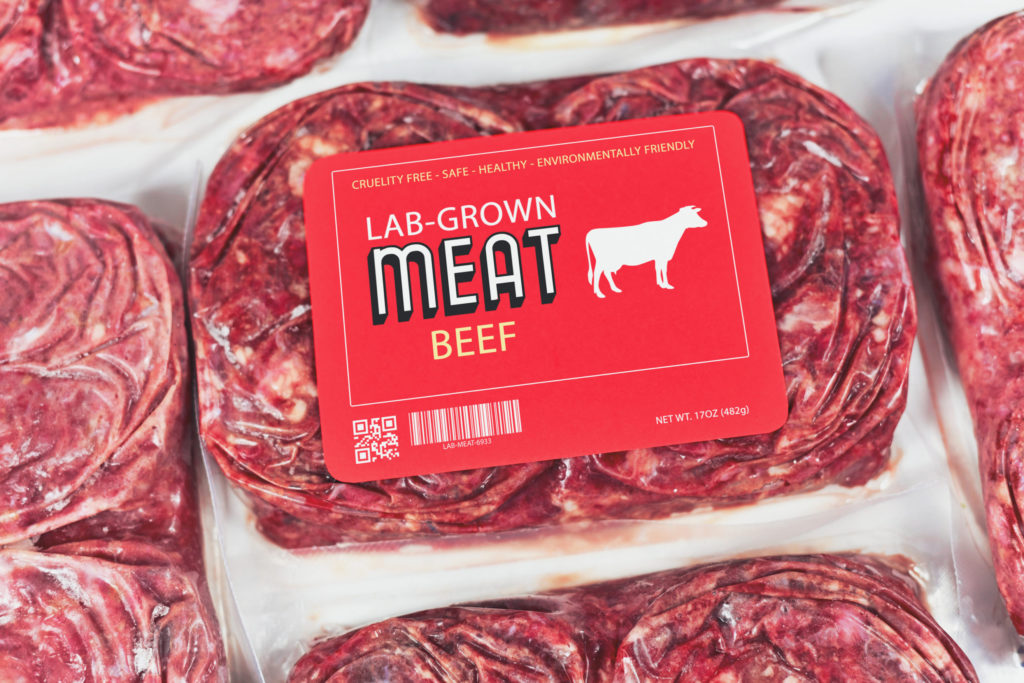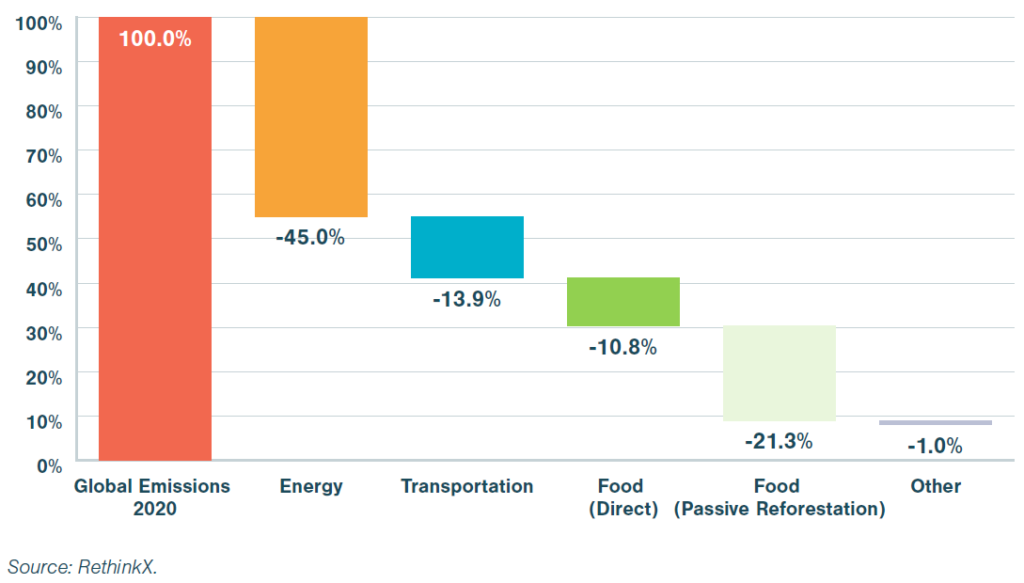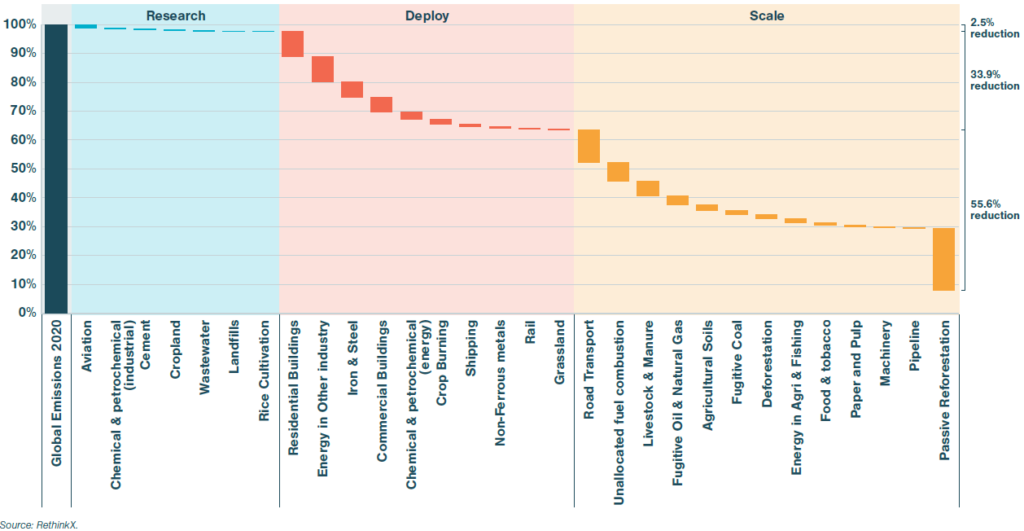
Is a Food Revolution Brewing?
By: Chandu Visweswariah
Calling all meat eaters! Would your meat cravings ever be satisfied by plant-based substitutes (like ‘Beyond Burgers’ or ‘Impossible Burgers’)? How about meat that is grown in the laboratory by a process called cellular agriculture? Never, you say? Maybe not so fast…
These meat substitutes go by the unappetizing name of Precision Fermentation and Cellular Agriculture (PFCA for short). The technology has made rapid advances in both cost reduction, and improvement of taste and texture. Without doubt, the product must be subjected to a double-blind study by meat-eating connoisseurs to prove that the substitutes are better before any real revolution can begin. PFCA products must be preferred, not a sacrifice or “nearly as good.”
Let’s play a game of what-if for a moment. What if the substitutes are really tastier? Plant-based “meat” can be manufactured by precision fermentation at about $10 per pound of protein but is predicted to reduce to $1 per pound as mass production takes hold by 2030. Cellular Agriculture is also on a steep learning curve from $4 per pound of protein today to $1 by 2030. Without doubt, these substitutes will be more economical than the “real thing” and can be mass-produced.
Proponents of PFCA claim that their products will be tastier, cleaner, cheaper, higher quality, available in a wider variety and more consistent than real animal products. The claim is not just for meat, but for all animal-based products including dairy. In our what-if game, if we concede that PFCA may be tastier than real meat, then market forces will cause a huge disruption – dare I say a revolution – in the food industry!
It turns out the PFCA products have some good properties:
- Not surprisingly, they are 100x more land-efficient.
- They are 10 to 25x more feedstock-efficient.
- They are 20x more time-efficient to produce.
- They are 10x more water-efficient.
- They will enable a “Food-as-software” industry whereby various cellular molecules are contributed by inventors for “software chefs” to assemble into tasty foods.
For those who know me, I mostly write about climate change and I’ve been a vegetarian all my life. So, why should I care? The answer is that we need some big ideas to solve climate change and this could be a candidate!
In a new report entitled “Rethinking Climate Change” by James Arbib, Adam Dorr and Tony Seba of the think tank RethinkX, the above “what-if” experiment is extrapolated into the future till 2035. I’ll fast forward here to the bottom line:
- We know that Agriculture, Forestry and Land Use (AFOLU) contributes about 23% of global Greenhouse Gas (GHG) emissions. Not surprisingly, the PFCA food revolution is predicted to roughly cut this in half, saving about 10.8% of global GHG emissions, a really nice result without the uphill battle of convincing people to switch diets.
- Now comes the surprising part. The total land use for animal agriculture today is 3.36 billion hectares (1 hectare = 2.471 acres) of which animal grazing land is 2.89 billion hectares and animal feed cropland comprises 0.47 billion hectares. The report estimates that we will save 80% or 2.7 billion hectares due to mass production of protein foods in the laboratory.
In traditional RethinkX fashion, the authors combine trends in multiple disciplines with market forces to imagine an astonishing result. If we simply allowed passive reforestation of the 2.7 billion hectares that are no longer needed for animal agriculture, we would absorb about 10 Gigatons (a Gigaton is a billion tons) of CO2 per year, or about 20% of global GHGs.

If this result makes you dizzy, grab an armrest or railing, sit down, sip your drink and consider this: not only will the food revolution directly reduce GHGs by 10.8% due to more efficient production of “animal” products, but it will free up land on which, by literally doing nothing, we will absorb another 21.3% of GHGs – a total reduction of 32.1%! And yes, passive reforestation really means doing nothing.
The authors weave this together with advances in solar panels, wind turbines, lithium-ion batteries, electric vehicles and heat pumps to make the following predictions by 2035.
- By switching to renewable energy, using utility-scale batteries to balance our electrical grids and mass adoption of heat pumps, we will reduce GHGs 45% due to clean energy use (see my previous blogs here, here and here).
- By moving mostly road transportation to EVs, we will reduce GHGs another 13.9%. That’s 58.9% so far. Rail and short-haul shipping will also be partially electrified by 2035.
- You’re thinking, “OK, that’s the easy part. What about the hard parts like aviation, long-haul shipping, cement, iron and steel, and industrial applications, all of which require innovation to decarbonize? Well, hold your horses for just a minute.
- Add in the 10.8% direct savings from the food revolution. We are now up to 69.7%.
- And here’s the kicker: add in 21.3% from passive reforestation, and we are at 91.0%.
- This is like a dream come true: 91% GHG reduction by 2035, perfect pole position to achieve net zero by 2040!

The implications are quite profound.
- Again, 91% GHG reduction by 2035 is possible.
- All we need are for fair markets (sans subsidies for incumbent foods and technologies and stakeholders) to do their magic.
- Along the way, we will have substantial opportunities for re-greening as well as environmental justice.
- Economy vs. the environment is no longer a tradeoff.
- Why stop at passive deforestation? At a small, bargain basement amortized cost of $10/ton, we can practice active deforestation and achieve net zero by 2035 and be well into negative carbon territory by 2040! Remember, net zero is not the end goal by itself, reducing CO2 concentrations from its present value of 415 ppm down to 350 ppm will require negative carbon emissions for a number of years.
- The “last carbon” problem (à la last mile problem or last vax problem) of industries that have traditionally been considered difficult to decarbonize are neither very significant in terms of GHGs nor is solving them a pre-requisite to achieving net zero (see figure below and focus on the “Research” items on the left).
- Easy-peasy, man’s biggest challenge solved in the next 15 years if we can only get the faux meat to taste just right!

So, here’s a call to action. Try a precision fermentation (plant-based meat) product. Try a cellular agriculture product. And while those products are perfected to your taste, try a meatless day (or two) per week. And of course, pay attention to your heavy hitters like your furnace, car and electricity source. Bon appetit!
4 thoughts on “Is a Food Revolution Brewing?”
Leave a Reply Cancel reply
You must be logged in to post a comment.


Great article Chandu Visweswariah ! Thank you!!!! We also must consider that animal agriculture impacts contributing to climate change aren’t just from food… animal ag is also ag for materials for making apparel, accessories, car interiors, home textiles and more…. Ie: leather, fur, wool, silk, etc… and those non-animal alternatives are generally fossil-fuel based! Another wicked problem… perhaps a future post consideration?
Thanks for this great post !
Thanks Andrea! Please be aware that the study only assumed 80% of meat is provided from Precision Fermentation and Cellular Agriculture by 2035. While we come up with more sustainable solutions, the other 20% of livestock will continue to provide the materials you mention. Meanwhile, this will free up so much land that passive reforestation will put us well on the path to net zero, which we need to achieve by 2040. — Chandu Visweswariah.
Chandu, according to this NYT article meaningful and cost effective production of lab grown meat is a long way off. Do you think David Humbird, Joe Fassler and others quoted in the NYT article are way off the mark or plain wrong?
https://www.nytimes.com/2021/10/14/opinion/climate-change-lab-grown-burgers.html?campaign_id=39&emc=edit_ty_20211015&instance_id=42918&nl=opinion-today®i_id=76840986&segment_id=71724&te=1&user_id=9b72fa759b140f89f9766c3c332deb3c
Hi Gunnel, thank you for your comment. I’d like to make a few important points:
1. If we can move to meat alternatives, most people don’t realize that it frees up land. Some of the land can perhaps be used for wind and solar farms. Even passive reforestation of this land will move the needle significantly in combating climate change. This is a win-win for greenhouse gas reduction.
2. The Times article points out that meat and dairy consumption has quadrupled since 1961, and demand continues to grow. We are moving in the wrong direction!
3. Plant-based meat alternatives are already on the market and economical (e.g., Beyond Burger, Impossible Burger) but of course true steak connoisseurs do not accept these as acceptable substitutes.
4. Cell-grown meat is possible in the lab., but right now expensive and hard to scale. However, many smart scientists and start-ups are working on it. It is easy to under-estimate the speed with which this industry might change once the technology is perfected.
5. The “side” benefits regarding animal welfare, climate change, food-borne illnesses, antibiotic resistance, health benefits, etc., are extremely significant.
6. The Times article points out that the U.S. spends $38B subsidizing the meat and dairy industry. The U.S. also spends a lot of money subsidizing the fossil fuel industry. Once again, WE ARE MOVING IN THE WRONG DIRECTION!
7. Of course cell-grown meat has some technological challenges to overcome. But the alternatives are plant-based meat, or no meat — we cannot keep living our lives the same way and expect to beat climate change! At the very least, we need to all start practicing “mindful meat-eating” (i.e., take greenhouse gases into account when you choose your meats, stay away from red meat).